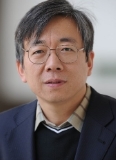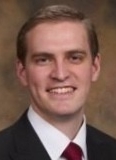
 Keynote Speakers
Keynote Speakers

Prof. Junhui Hu
(IEEE Senior Member)
State Key Lab of Mechanics and Control of Mechanical Structures/ Nanjing University of Aeronautics and Astronautics, China
Biography: Junhui Hu received his Ph.D. Degree from Tokyo Institute of Technology, Tokyo, Japan, in 1997, and B. E. and M. E. degrees in electrical engineering from Zhejiang University, China, in 1986 and 1989, respectively. Currently he works for Nanjing University of Aeronautics & Astronautics, China, as a full professor. His research interest is in ultrasonic sensors and actuators, ultrasonic nano fabrication, ultrasonic micro/nano/molecular manipulations, etc. He is a Chang-Jiang Distinguished Professor, China, and an IAAM Fellow. He authored and co-authored more than 300 publications, including more than 100 full SCI papers, two books, 1 editorial review in an international journal and more than 60 disclosed/empowered China and Japan patents. He is the sole author of monograph book “Ultrasonic Micro/Nano Manipulations: Principles and Examples” (2014, World Scientific). He has given more than 30 keynote/invited lectures at international conferences, and his research work has been highlighted by 7 international scientific media. He served lots of international conferences as a Technical Program/Organizing/Scientific Committee member, and was the chairman of five international conferences. He was awarded the title of valued reviewer by Sensors and Actuators A: Physical and by Ultrasonics, and won the Paper Prize from the Institute of Electronics, Information and Communication Engineers (Japan) as the first author in 1998. Presently, he is an editorial board member of four international journals, board member of Chinese Acoustical Society and member of its academic work committee, and deputy director of expert committees on electronic information materials and devices, and on Aerospace materials, Chinese national scientist think tank for materials and devices.
Keynote's Title: Ultrasonically Catalyzed Gas Sensor Systems
Keynote's Abstract: High-performance gas sensing systems have huge potential applications in human health diagnoses, food industry, environmental safety, internet of things, chamber air quality monitoring, etc., due to the merits such as point-of-care testing, easiness to operate, simple and light structure, low cost, etc. My research group proposed the ultrasonically catalyzed gas sensing method in 2017, and then successfully applied the method into high-performance gas sensing and single-sensor E-noses. This lecture gives the detailed research results in this respect. The first part of this lecture includes principle of the ultrasonic catalysis in gas sensing, and structure and characteristics of the gas sensors catalyzed by gas borne ultrasound. In the second part, working principle and algorithms of ultrasonically catalyzed single-sensor e-noses, are given and explained, as well as the structure, system design and gas discrimination performance. The algorithms applied in the E-noses include the k-method, R-C method and machining learning methods. It shows that the ultrasonically catalyzed gas sensors have much better sensitivity and lower detection limit than the conventional ones, and ultrasonically catalyzed single-sensor E-noses have strong capability of gas discrimination and concentration measurement.

Dr. Ian McAndrew
Dean of doctoral programs at Capitol Technology University & finance committee of the Royal Aeronautical Society
Biography: Professor Ian R. McAndrew FRAeS is a very highly qualified academic with extensive experiences within industry and internationally recognised researcher with extensive teaching experience at all levels of education. Conference and Journal publication of 100 over 32 years, six books and numerous Keynote presentations around the world. Has supervised 168 students to their doctoral completion, consultancy experience internationally for multi-nations and organisations. Leading a global doctorate program of in excess of 450 students. As the Dean of Doctoral Programs at Capitol Technology University he is responsible for 35 different Doctoral Programs ranging from Cybersecurity, Analytics, Aviation, Aeronautical Science and Technology based. de stage (UK USA, Germany, Italy, Jordan, Japan, Australia, Greece and Kenya) his experience includes over 115 successful Doctorate successes.
Areas of Expertise: Mathematics & Statistics, Engineering, Electrical Science and systems, Aviation
Keynote's Title: Cybersecurity in Global Aviation
Keynote's Abstract: Aviation nowadays is changing with the possibilities of the IoT and how Operation Technology offers real time solutions. What has not advanced as fast is the cybersecurity to protect as a critical infrastructure. The research will discuss what are the problems and risks and report on the conclusions of several research topics and what is now needing to be research. It argues that research to the solutions is limited by economies, technology and this is likely to become more of a problem as aviation advances. Furthermore, the risk added now the industry tackles the resistance from sustainability.

Prof. Bryan J. Lewis
Department of Mechanical and Civil Engineering Brigham Young University - Idaho, USA
Biography: Dr. Bryan J. Lewis is a licensed Professional Engineer (PE) and a Professor of Mechanical Engineering at Brigham Young University – Idaho. He completed his PhD at the Pennsylvania State University in 2014. He currently teaches courses in numerical analysis, fluid mechanics, thermodynamics, and product design. Dr. Lewis also manages the ME senior capstone design program, partnering student teams with corporations and entrepreneurs to overcome design, process, and product challenges. Prior to BYU-Idaho, Dr. Lewis worked in oilfield research and product development for Halliburton Energy Services. As a senior research engineer, he assisted in development of hydraulic fracturing pumps, sand transport systems, and fluid-sand blending equipment. Dr. Dr. Lewis was the lead engineer for Halliburton’s sound-mitigated hydraulic fracturing units. Dr. Lewis holds more than 20 U.S. and international patents for various technologies he helped develop at Halliburton.
Dr. Lewis Dr. Lewis also serves in a variety of roles for the American Society of Mechanical Engineers (ASME). He has been the faculty advisor for the BYU-Idaho ASME Student section since 2017. In 2020 Dr. Lewis joined the executive committee for the newly formed ASME Member Development and Engagement Sector, and in 2021 he was elected as chair of the Idaho Section. When he is not helping students, or working on improving his courses, Dr. Lewis enjoys spending time with his wife and their eight children. He and his wife are avid marathon runners, and enjoy books, movies, food, and traveling to new places with their children.
Keynote's Title: Mass conservation limitations in overset CFD with unsteady moving grids
Keynote's Abstract: Overset grid techniques (also known as Chimera grids, composite grids, or overlapping grids) were first introduced in 1966, and underwent significant exploration, particularly at NASA in the 1980’s and 1990’s. Commercial CFD codes, such as ANSYS Fluent, and STAR-CCM+, began supporting overset grids around 2015, significantly increasing the number of CFD practitioners utilizing this technique.
An overset grid simulation consists of a background mesh and one, or more, body meshes that overlay the background. Cells in the background mesh are removed from the simulation and designated as hole cells if they cover the same geometric space as the body mesh. The cells near the edge of the removed region must overlap the edge of the edge of the body mesh. An interpolation stencil is developed for each cell in the background and body mesh in the overlapping region to exchange information throught the simulation. If the body mesh is moving, then the hole cell identification, and fringe-donor interpolation stencils must be updated each time-step.
During the NASA years, overset methods were primarily applied to compressible flow simulations of multi-body external aerodynamics. In the early 2010’s, overset methods were adopted for incompressible underwater and naval surface ship simulations. The use of moving overset grids in incompressible flow simulations poses a unique challenge--how to account for the instantaneous mass conservation imbalance when the grid volume changes. If the body mesh moves by a small amount, relative to the size of the overlapping grid cells, then the fringe-donor interpolation stencils can simply be updated based on the new cell positions. However, if the mesh motion requires current hole cells to be reactivated, or new hole cells removed from the simulation, the total fluid volume continued within all active grid cells changes instantaneously. In an incompressible flow simulations, the instantaneous volume change results in a significant pressure oscillation, due to the pressure-mass coupl

Assoc. Prof. Fengnan Guo
Dalian University of Technology, China
Biography: Guo Fengnan is an associate professor at Dalian University of Technology and a national innovation engineer, he graduated from Harbin Institute of Technology. His current research interests focus on thermal fracture of composite materials, design of advanced astronautics propulsion and structural integrity analysis. He has published more than 20 papers, some papers published in Mechanics of Materials, International Journal of Solids and Structures, and other journals. He presided many national-level scientific research projects and applied for more than 10 patents for inventions. He was selected as tip-top talent of youth in No 6 academy of CASIC and won the third class in China Innovation Methods Competition.
Keynote's Title: Thermo-Mechanical Fracture Study and its Applications in nonhomogenous materials
Keynote's Abstract: The applications of nonhomogeneous materials are more and more widely in airplane, spacecraft and other astronautic equipment. Although nonhomogeneous materials, such as Functionally Graded Materials(FGM), and three-dimensional braided composites, have many advantages, the complex structure may arouse new difficulties in dealing with the crack problem, especially when the materials under thermo-mechanical loading. How to obtain the thermal fracture parameters in the material with complex interfaces effectively is a key problem for evaluating the astronautic equipment life and aircraft design. A modified interaction energy integral method (IEIM) combined with the extended finite element method (XFEM) is developed to deal with the thermal fracture problems of nonhomogeneous materials. This method can be proved to be domain-independent when the integral domain contains complex interfaces, so the application ranges can be enlarged greatly. Thermal fracture parameters, such as thermal stress intensity factors (TSIFS) and T-T-stress, are analyzed in thermal interface crack problems, heat flow problems, and thermal shock problems. Some structural integrity analysis examples in astronautics equipment are discussed using the present method. The results can be used to optimize and improve the design of astronautic equipment.